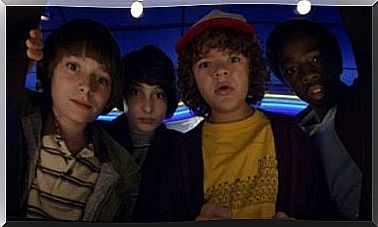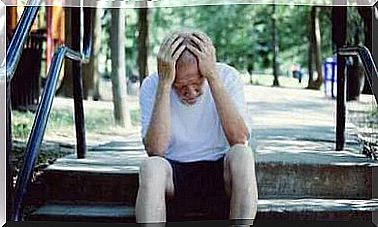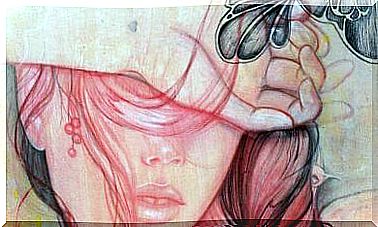Catastrophic Thoughts: The Fear Of Living

People surrounded by catastrophic thoughts tend to see terrible consequences in everything that happens. If they have a stomach ache, they are afraid to go to the doctor for fear that it will be a malignant tumor. If they light up in the fireplace, the image of a third degree burn due to carelessness soon appears on their retina. When they get on a plane, the image of themselves as they put on life jackets will buzz around in their heads.
From the point of view of nature, we tend to react with a certain degree of fear or anxiety towards the new or uncertain. For some people, however, this small cluster of fear becomes something alarming and boundless, which takes over and makes their existence a true hell.
People with catastrophic thoughts are full of bad feelings. The common thread in their argument is usually based on the premise “What if …” There are therefore thoughts such as “What if I take the bus and crash?”, “What if I present my ideas and everyone laughs at me?”, “What if I cross the street without noticing that a car is coming towards me at full speed? ” are common. They always envision the worst opportunities in any situation.
The nature of catastrophic thoughts
Catastrophic thoughts are not an independent problem. They are often associated with deeper anxiety and / or depressive states. For example, for someone who has a high anxiety level, an increase in heart rate will trigger the fear of a heart attack. Those who suffer from depression tend to imagine themselves in situations where they are abandoned or rejected; living under a bridge, begging on the street, or dying alone in a hospital.

The truth is that we all have catastrophic thoughts from time to time, but that what makes it an important symptom is the regularity with which they occur and their wayward character. We can of course go to the zoo and be attacked by a lion, but the chance of this happening is very small. We can also be hit by a car, but there are many millions more people who are not exposed to this accident than people who are exposed.
The point is, for those who have catastrophic thoughts, this small probability is very exaggerated. This is because there is a distortion of thought and an inability to objectively assess the probability that something will happen. Instead, it focuses on the fear that the brain itself creates.
In other words, the idea of these absurd risks is repeated so often that the affected person ends up believing that the probability that they will occur is high. In this exaggerated assessment of probability, we are influenced by other factors such as our own predisposition, our environment and the media.
In the human brain, recurring thoughts affect how neurons connect to each other. The more you think about something, the more often the thought comes back. This is what happens with catastrophic thoughts: since they are repeated so often, they become a permanent fixture. And since they are always there, they are constantly repeated even though they are part of an obvious self-deception.
Disasters and the fear of living
Almost all people experience at least one disaster. Sooner or later we are confronted with a loved person dies, with a problem that is difficult to handle or simply with uncertainty about what to do for a drastic change. It is nevertheless the case that if these situations had been constant, we would never have been able to endure them.

What those who are besieged by catastrophic thoughts fail to understand is that most situations, in all probability, are addressed and handled. What they deeply fear is being left in a situation of extreme vulnerability. Situations they can not handle, or that leave them, literally, paralyzed, without the ability to act. This presupposes that we ignore a fact: namely, that we have the resources to face almost any situation, no matter how difficult it may be.
Many people with catastrophic thoughts have a difficult childhood behind them. They learned as children that the outside world is hostile and that dangers lurk everywhere. When they were young, they probably could not predict where the next risk could come from and have therefore built up exaggerated defense mechanisms.

In order to deal with these types of thoughts, we must stop to evaluate them and send them through a ” reality filter”. In addition, it may be good for us to think about possible reactions to these dangers, and to begin with, how we can prevent them.








